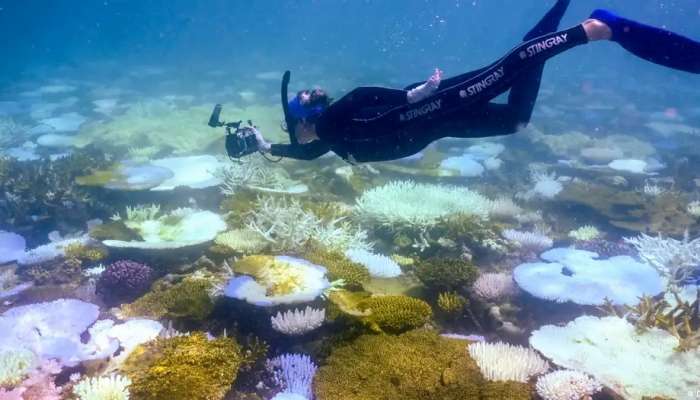
Paris: UNESCO has warned that Australia's Great Barrier Reef "remains under serious threat," directing the country to take immediate action to protect the world's largest coral system.
"Urgent and sustained action is of utmost priority," the United Nations' cultural organisation said in a draft decision released late on Monday.
UNESCO asked Australia to update its protection efforts by early next year, but did not recommend placing the reef on its endangered heritage list.
The organization praised Australia's steps on water quality and restrictions on gill-net fishing. It nevertheless expressed concern over land clearing and urged more ambitious emission reduction targets.
Australia's Minister for the Environment and Water Tanya Plibersek called the cultural body's decision a "huge win."
"We are acting on climate change, improving local water quality, protecting our marine life, dealing with invasive species, and investing a record amount of money into reef programs," she said in a statement on Tuesday.
The UN body still asked Canberra for an update on Australia's actions regarding the reef by next February. The country had requested that UNESCO wait until 2026.
Environmental groups call for stop to new fossil fuel projects
However, Australian environment group, the Climate Council, criticised Plibersek's positive spin on UNESCO's warning, highlighting the reef's repeated bleaching events and calling for a phase-out of fossil fuels.
"Every new coal and gas project adds harmful climate pollution into the atmosphere and further endangers the reef. The Government must build upon their clean energy plans by also planning to phase out fossil fuels," Climate Council chief executive Amanda McKenzie said.
Environmental groups such as Greenpeace and the World Wide Fund for Nature also urged Australia to reduce emissions further and stop new fossil fuel projects.
The Great Barrier Reef, on the northeast coast of Australia, boasts the world's largest collection of coral reefs. It features 400 types of coral, 1,500 fish species, and 4,000 mollusc varieties.
It is also home to endangered species such as the dugong (sea cow) and the large green turtle.
Known for its biodiversity, the reef attracts around 2 million visitors annually.